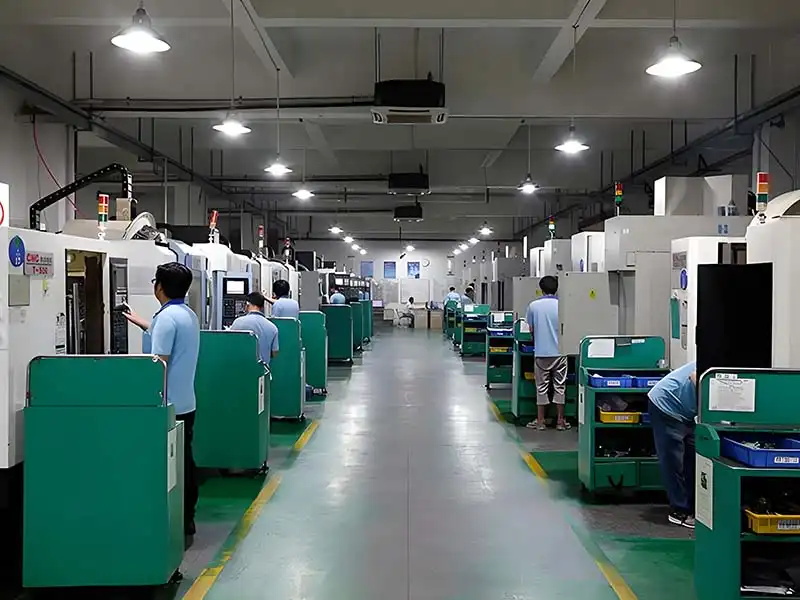Understanding the real cost of CNC machining is critical for manufacturers, product designers, and procurement professionals. Whether you work in an engine machine shop or are evaluating automotive machine shops for a production run, this guide will help you grasp the cost drivers and practical strategies to reduce expenses while maintaining quality.

What is CNC Machining? (A Quick Refresher)
CNC (Computer Numerical Control) machining uses computer-controlled tools to remove material from a workpiece to create custom parts. It’s a staple process across industries—used in aerospace, electronics, and automotive machine shops. The process includes milling, turning, drilling, and grinding, all programmed via CAM software. Modern CNC machine shops, including machine workshop operations and metal machining shops, rely on precision programming to deliver parts with tight tolerances and high repeatability.
Why CNC Machining Costs Vary: The Core Challenge
No two machining jobs are the same, which is why CNC machining cost varies widely. Design complexity, material type, volume, and even the geographic location of your provider (e.g., machine shops in South Carolina vs. California) all contribute. As more businesses search for “auto machine shops near me,” understanding these cost drivers helps ensure accurate quotes and budget forecasting.
Key Factors Influencing CNC Machining Costs (Deep Dive)
4.1 Material Selection & Cost
Material costs can make up a significant portion of a machining quote. Basic aluminium is generally cheaper, especially when sourced in bulk, while specialty metals like titanium or stainless steel anodizing raise costs. Anodizing (or annodize/anotizing/anodyzed/anodisé) further adds value and durability but increases machining cost. Services like ace anodizing offer various finishes, often required in high-end consumer and aerospace applications.
4.2 Part Design & Complexity
The more complex your part, the higher the machining cost. Tight tolerances, intricate geometries, undercuts, and deep cavities require longer machine time, specialized tooling, and more manual setup. Simplifying designs based on DFM (Design for Manufacturability) principles can significantly reduce costs.
4.3 Production Volume & Economies of Scale
High-volume CNC machining projects benefit from economies of scale. Once the setup is done, producing more units lowers the per-part cost. For small runs, setup and tooling can dominate the cost structure, especially in local machine shop fabrication scenarios.
4.4 Machine Time & Operation
CNC machine time is typically billed hourly. Parts requiring longer tool paths or multiple passes cost more to produce. Tools like a cnc grinding cost calculator or cnc machining cost calculation tool can help you estimate expenses accurately.
4.5 Labor Costs (Programming & Operation)
Skilled machinists and programmers are essential for quality output. Labor costs vary by region—machine shops hiring near me in high-wage areas tend to charge more than shops in lower-cost regions. Programming time also adds overhead for custom parts.
4.6 CNC Machine Costs (Depreciation & Maintenance)
Machine tools are capital-intensive. Modern 5-axis CNC mills and turning centers require ongoing maintenance, calibration, and part replacement. These costs are baked into your quote, whether you’re working with o & f machine products or a small area machine shop.
4.7 Surface Finishing & Post-Processing
Post-processing adds aesthetic and functional value, but also cost. Anodizing (annodized/anotized), polishing, sandblasting, or painting all contribute to the final price. Anodizing plants typically charge based on surface area and finish type.
4.8 Timing & Lead Time Pressures
Short lead times can increase your machining cost. Machine shops often reallocate resources or work overtime to meet deadlines. Just-in-time machining or expedited services will always command a premium.
4.9 Additional Costs
Other costs include inspection, certifications, packaging, and logistics. These might be minor in some cases, but for regulated industries or export jobs, they add up quickly.
CNC Machining Cost Breakdown Table
| Cost Factor | Low-End Estimate | High-End Estimate | Remarks |
|---|---|---|---|
| Material Cost (per kg) | $2 (Aluminium) | $50+ (Titanium) | Higher for exotic or alloyed metals |
| Machining Time (per hour) | $60 | $120+ | Based on machine type, tolerance, region |
| Anodizing & Surface Finish | $10 | $100+ | Depends on surface area and finish (e.g., annodized) |
| Programming & Setup | $100/project | $1,000+ | High for one-off or complex CNC machining projects |
| Equipment Maintenance | $500/month | $2,000+/month | Cost spread across multiple jobs at a metal machining shop |
Strategies for Reducing CNC Machining Costs (Actionable Steps)
5.1 Design for Manufacturability (DFM) is King
Optimizing design for machining is the single most powerful cost-cutting strategy. Avoid unnecessary tolerances, complex geometries, and thin walls. DFM ensures parts can be machined quickly and with fewer errors.
5.2 Smart Material Selection & Cost-Benefit Analysis
Choosing a material isn’t just about strength—it’s also about machinability and post-processing needs. For example, aluminium anodised is cheaper to machine and finish than stainless steel. Use a balanced cost-benefit analysis for each material.
5.3 Optimize Production Volume & Ordering
Larger batch sizes reduce per-unit cost significantly. Work with your CNC provider to combine orders or plan monthly runs. Machine shop fabrication is most efficient when the setup time is amortized over hundreds or thousands of units.
5.4 Leverage Technology & Efficient Programming
Advanced CAM software and simulations help reduce waste. Efficient toolpaths and nesting can save hours. Partner with machine shops that invest in these tools for lower total cost.
5.5 Partner with the Right CNC Machining Service
Whether you’re choosing an engine machine shop or evaluating multiple machine shops in South Carolina, look for those with modern equipment, transparent pricing, and expertise in your sector. Ask if they use tools like cnc grinding cost calculator to help control cost.
Outsourcing CNC Machining Services: When it Makes Sense
If you’re not a high-volume manufacturer, outsourcing CNC machining can reduce costs. A dedicated machine workshop has access to advanced tools and processes you may not. This is especially useful for startups or those needing specialist capabilities like stainless steel anodizing.
How Much Does CNC Machining Cost? (Providing Context)
Typical machining costs range widely:
- Simple aluminium part: $50–$100
- Complex steel component: $500–$1,500+
- How much does CNC machining cost per hour? Usually between $60 and $120
The final price is a function of material, design, quantity, and finish. Always ask for detailed quotes from multiple machine shops.
Conclusion: Taking Control of Your CNC Budget
Being informed helps you make smarter procurement decisions. By understanding cost breakdowns and leveraging DFM, optimized materials, and the right partners, you can keep your cnc machining cost competitive—whether you’re working with local machine shops or outsourcing abroad.
FAQ: Your CNC Machining Cost Questions Answered
Q: How much does CNC machining cost per hour?
A: Most machine shops charge between $60–$120/hour, depending on complexity and region.
Q: What affects the price of rendering for CNC parts?
A: Factors include part complexity, number of surfaces, and the use of photorealistic rendering software.
Q: Are machine shops hiring near me?
A: Yes, especially in growing regions and sectors like automotive machine shops and defense manufacturing.
Q: What’s the difference between anodized, annodized, anodyzed, and anotized?
A: They’re all variants of “anodizing,” a process that increases surface durability and appearance.
Q: What’s the role of an anodizer?
A: An anodizer or anodizing plant applies controlled oxidation to metal surfaces for corrosion resistance and aesthetics.
Q: How can I calculate the total machining cost?
A: Use a cnc machining cost calculation tool or consult your machine shop for detailed estimation.


